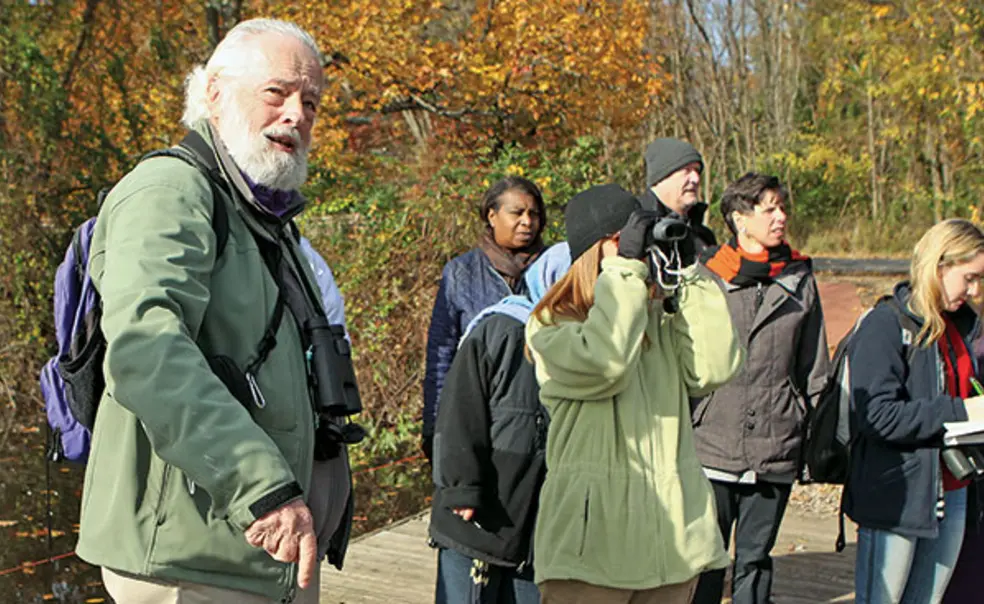Close to Nature
Professor emeritus Henry Horn offers the backstories of local flora, fauna
Henry Horn was out looking for feathers.
The professor emeritus of ecology and evolutionary biology had spotted a peregrine falcon near the top of Fine Hall, and the first stop on his weekly nature tour was at the base of the building, where the bird’s leftovers remained in clumps of blood-speckled plumage.
Horn lifted a silky brown feather from the grass and held it up to his audience. “See how the tips are rounded?” he asked. “My guess is screech owl.”
Since arriving as an assistant professor in 1966, Horn has been immersing himself — and others — in Princeton’s flora and fauna. He incorporated local fieldwork into his EEB classes and still holds freewheeling nature tours every Friday of the academic year, open to anyone who shows up at his office.
Horn’s Nov. 8 walk, held as part of the Lewis Library’s 10th-anniversary celebration, traced a path from the falcon’s perch to the still, glassy waters of Lake Carnegie and back. He paused frequently along the way to answer questions and draw the group’s attention to birds, berries, and streams.
WATCH the Office of Sustainability’s Nature Walks with Henry Horn
Trees are Horn’s area of expertise: He studies their spatial patterns, using models to make sense of structure and growth. But Horn’s other interests extend much further, beyond ecology. On his nature tours, even the most unassuming shrubs get backstories that weave ecological facts together with geometry, environmental policy, and history.
“This is snakeroot,” he said on a path behind the neuroscience building, pointing at a bush capped by white flowers. Ingestion of the plant’s toxins, Horn explained, can cause milk sickness, the disease that killed Abraham Lincoln’s mother.
He moved a few steps forward, then paused at a massive tree stump, more than 140 years old — Horn knew because he’d counted the rings before. A minute later he stopped again, this time at a spindly tree that offered up orange persimmons as bright as Christmas ornaments. “It leaves a bit of a furry taste in your mouth,” he said, biting into one.
Horn’s explanations reflect his own varied interests as a scientist with a penchant for creative pursuits. For his artistic ventures he’s developed an “altered ego,” J. Chester Farnsworth, who speaks with a thick Southern drawl and makes collages out of discarded computer parts.
“The old adage that if you sit and wait, nature will come to you, is not exactly true,” he said. “What is true is if you see something, it’s worth stopping and looking.”












No responses yet